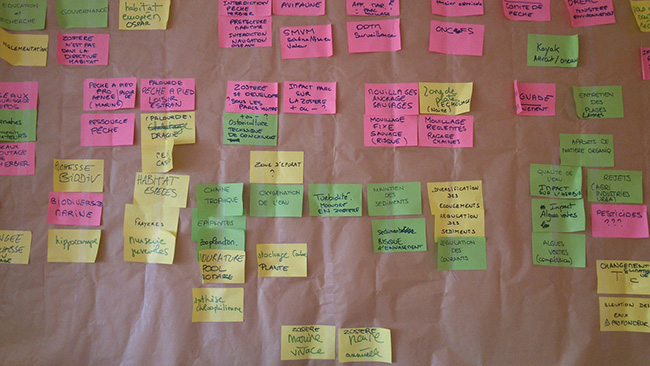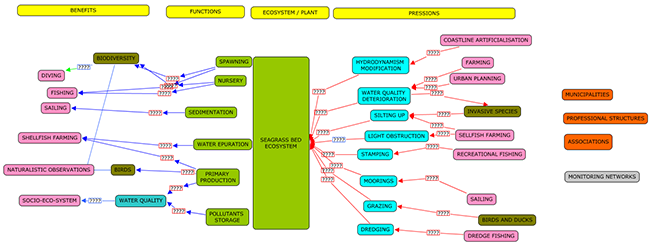4.3.3 BRAINSTORMING


Figure: for what phase this tool may be useful
Brainstorming is a creative technique based on the production of ideas by a group of people. It is a good method for working closely with stakeholders and finding the most original ideas in the shortest period of time.
This exercise can be achieved just with the case study team but the output of a brainstorming workshop is richer if it involves more participants.
Brainstorming is a good way to:
- Collect information on the studied system
- Organize the ideas (phase 1)
- Identify and classify hypotheses of changes (phases 2 and 3)
- Share reflections and ideas between stakeholders
The ideal number of participants is between 15 to 20 people, above this number it will be more difficult to manage a constructive discussion and answer to all the questions. A facilitator should lead the workshop.
It is important for the facilitator to explain the topic of the workshop, its aims and the rules that the participants have to follow.
Facilitator:
- Presents the topic and the aims of the brainstorming
- Presents the approach as simply as possible
- Answers questions from the participants
- Avoids criticizing, interpreting, commenting or censoring ideas and encourage the participation of everyone.
- Writes down all ideas and makes them visible to everyone
- Discourages competition and encourages listening to others
Attitudes expected of the participants:
- Participating in a creative and inclusive way
- Cooperating rather than competing
- Collaborating and enjoying working together
- Accepting the challenge of finding ideas
- Preventing blockages by avoiding criticism
- Accepting the ‘fun’ nature of the technique
The basic rules of brainstorming:
- Record all ideas; do not criticize, suspend ‘reality’ and think and speak freely
- Give free rein to the imagination, spontaneity, surprise and the unexpected
- Produce a lot of ideas
- Combine ideas to create a new ones
The facilitator should ask the participants to give their ideas as to the aim of the workshop:
- Construction of a systems diagram
- Identification and ordering of issues
- Identification of possible changes and hypotheses associated
- Association of hypotheses to build the scenarios
The participants should be invited to write their ideas on sticky-notes and give them to the facilitator for the flip-chart. Then, the facilitator removes any duplicate ideas on sticky-notes and asks the participants to explain their sticky-note to the others participants to confirm they have the same understanding. The facilitator then organizes the ideas on the flip-chart, respecting the stakeholder’s choices. The ideas can be organised by category with a PESTLE analysis for example, and linked by arrows that indicate the relationship between ideas.
At the end of the workshop, an individual written evaluation can be distributed to the participants to collect their opinions. This strengthens the spirit of democracy and contributes understanding to any following workshops, if needed. It can be beneficial to tell the participants during the introduction to the workshop that a written evaluation will be done at the end of it followed by a discussion time of 15 minutes to give them the opportunity to express their opinions on the workshop.
Time: 2 hours to 1 day
Technical level: 2/4
Advantages: quick and creative tool; helps to think outside the box; produces a lot of information; creates links and confidence between the stakeholders and managers; gathers knowledge and issues; useful in collecting experts’ opinions.
Limits: availability and involvement of stakeholders; some people do not speak out in-group situations.
Resources needed: facilitator; sufficient amount of wall space; flip-charts; sticky-notes; pencils etc.
Advice: it is important to invite the stakeholders with plenty of timebefore the workshop;
Explain to the stakeholders that this work concerns long-term reflection and will not necessarily respond to their immediate issues;
Manage time well and ensure there is enough time for discussion;
Involving external consultants or experts can be useful;
Take photographs of the flip-charts at the end of the workshop.

Example of the results of a brainstorming workshop undertaken in the Golfe du Morbihan on seagrass ecosystem.

Figure: photo done by Juliette Herry.

Example of draft mapping achieved after the brainstorming workshop: ecosystem services, activities, natural drivers, pressures, organizations and legal framework.

Figure: done by Manuelle Philippe


